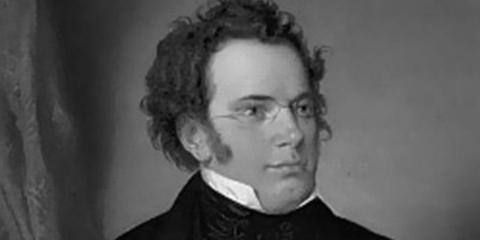MCO’s “Trout Quintet” can be heard on Thursday 17 December 8:30pm AEST on Melbourne Digital Concert Hall via live stream and live in the studio audience at the Athenaeum Theatre, Melbourne.
Franz Schubert
String Trio in B flat major D471
I. Allegro
Piano Quintet in A major D667 Trout
I. Allegro vivace
II. Andante
III. Scherzo: Presto
IV. Andantino – Allegretto
V. Allegro giusto
The Viennese composer Franz Schubert (1797–1828) wrote chamber music throughout his short life. These works were written alongside his orchestral, piano, choral and vocal music. His contribution to the chamber music repertoire is immense. Some of the genres he championed were the string quartet and the piano trio as well as works for other combinations of instruments, including the String Quintet D956, the Octet D803 and the Trout Quintet D667.
The years 1814–1817 were incredibly productive years for the teenager and included the composition of three string trios (for violin, viola and cello). The first (D111A) in 1814, the second (D471) in 1816, and the third (D581) in 1817.
The string trio D471 exists as a complete first movement Allegro (there is also an incomplete Andante sostenuto movement). The Allegro is in sonata form with the two highly lyrical themes complementing each other. This miniature is a gem that encapsulates so much of the composer’s Viennese masters—Haydn, Mozart and Schubert’s teacher Salieri.
The Piano Quintet in A major D667 is one of Schubert’s most popular works. It was commissioned by Sylvester Paumgartner, a music patron and amateur cellist, to follow the instrumentation of the Hummel Piano Quintet in E flat Op 74 – piano, violin, viola, cello and double bass. One of the conditions of the commission was to incorporate Schubert’s 1817 lied Die Forelle (The Trout) into the work. This he did and the work has been so titled since then.
The quintet was written in 1819 in Vienna after Schubert returned from a summer break in Steyr. Although the work was performed in numerous salons it was not published until 1829, a year after his death.
The five movements follow the regular pattern of many of his quartets – fast, slow, scherzo, fast with the additional Andantino movement placed before the final movement.
The Allegro vivace opens with a sense of grandeur and flourish with ascending arpeggios on the piano. The movement is in sonata form and momentum builds throughout. The Andante is a quietly lyrical movement built around three themes. It is in two sections with the second being a repeat of the first in another key. Harmonically this movement covers a vast tonal landscape adding to the sense of melancholy. Great contrast is achieved in the blisteringly fast Scherzo: Presto. The Andantino – Allegretto is the heart of this quintet and is a set of variations on “The Trout”. The variations present the theme across the instruments, in a range of keys and with elaborations on the melody. The Allegro giusto is spirited and gypsy-like in character. Like the second movement this is in two sections, with the repeated section in a new key. The work has a delightful and leisurely feel and remains to this day one of Schubert’s most loved chamber works.
David Forrest

